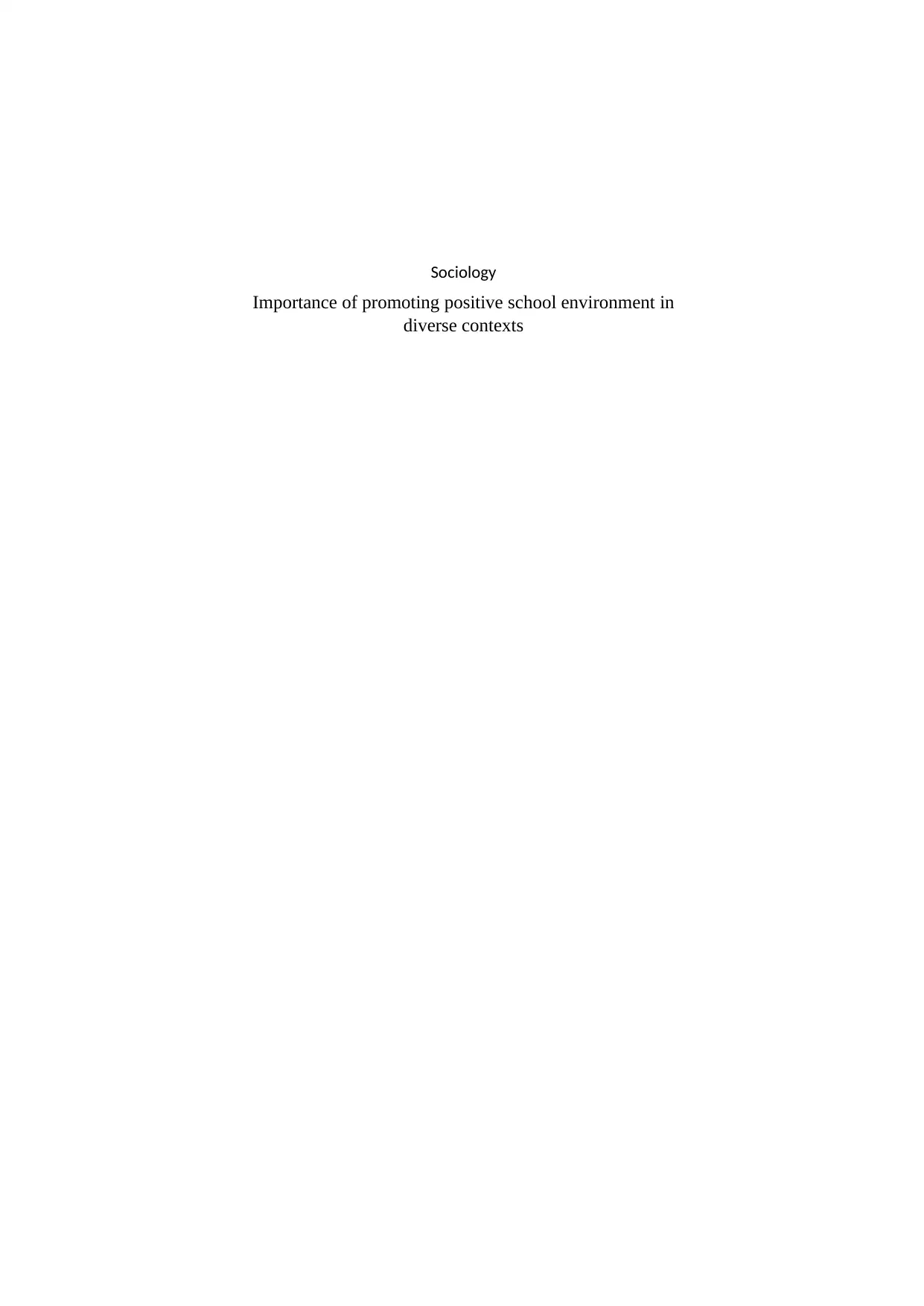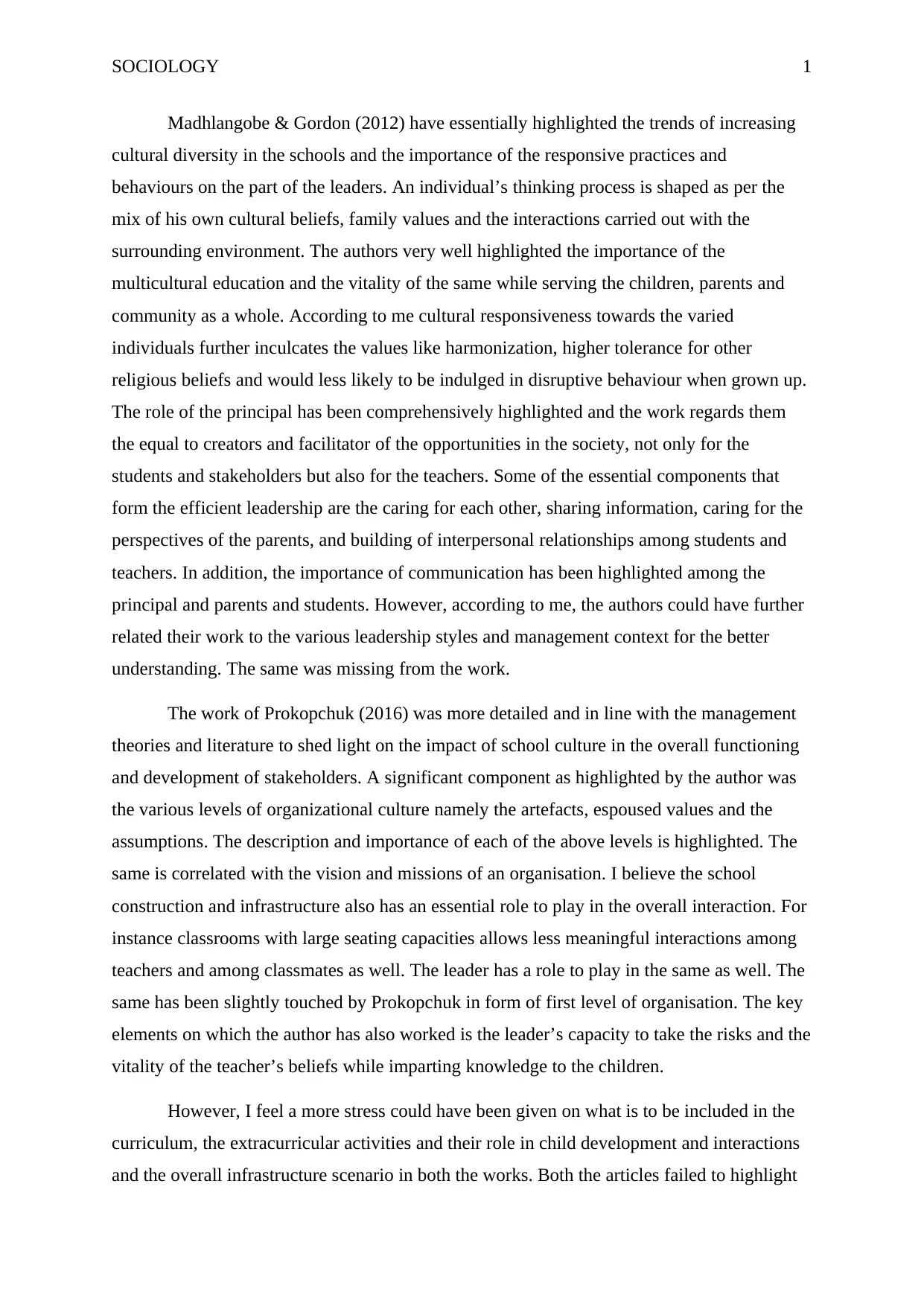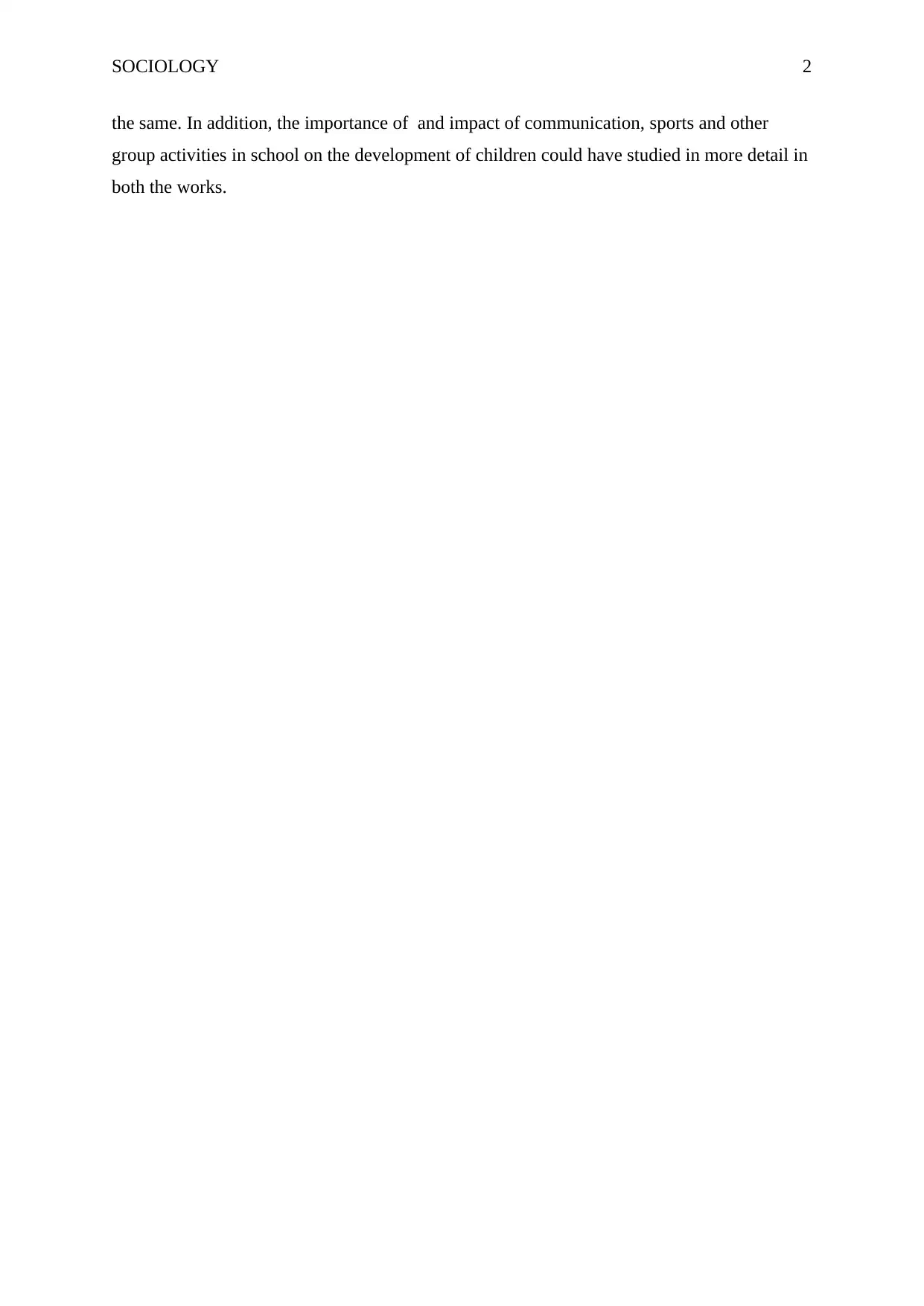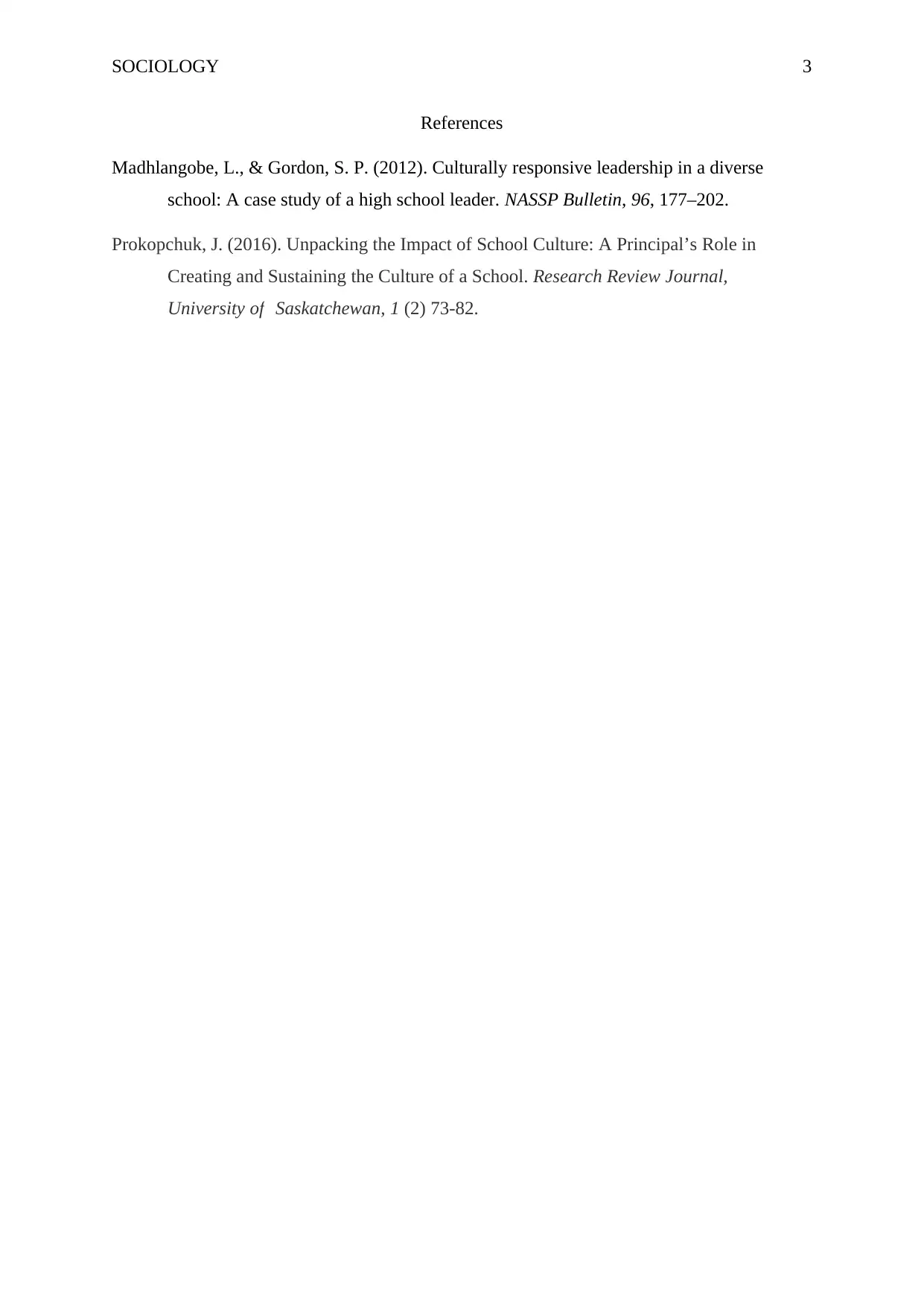Sociology Review: Leadership, Culture & Positive School Environments
VerifiedAdded on 2023/04/21
|4
|633
|67
Literature Review
AI Summary
This literature review examines the importance of promoting positive school environments from a sociological perspective, drawing on the works of Madhlangobe & Gordon (2012) and Prokopchuk (2016). It highlights the increasing cultural diversity in schools and the necessity of culturally responsive leadership. The review emphasizes the role of school leaders in fostering harmonization, tolerance, and positive interpersonal relationships. It also discusses the impact of school culture, including artifacts, espoused values, and assumptions, on student development. While acknowledging the contributions of both articles, the review suggests further exploration of curriculum content, extracurricular activities, infrastructure, and communication strategies to enhance the overall school environment and promote student well-being. The review concludes by noting the importance of sports and group activities in schools and their impact on child development.
1 out of 4











![[object Object]](/_next/static/media/star-bottom.7253800d.svg)